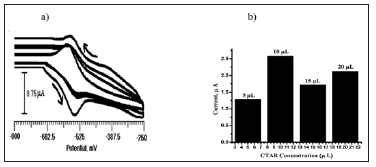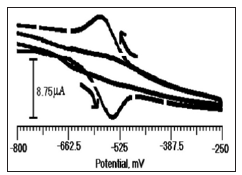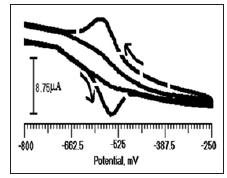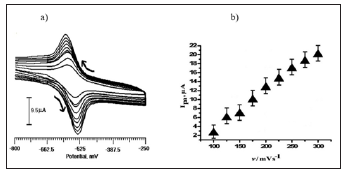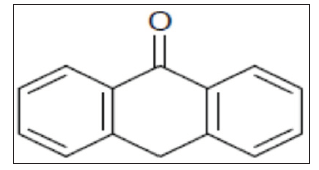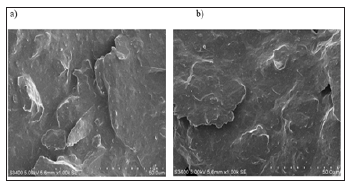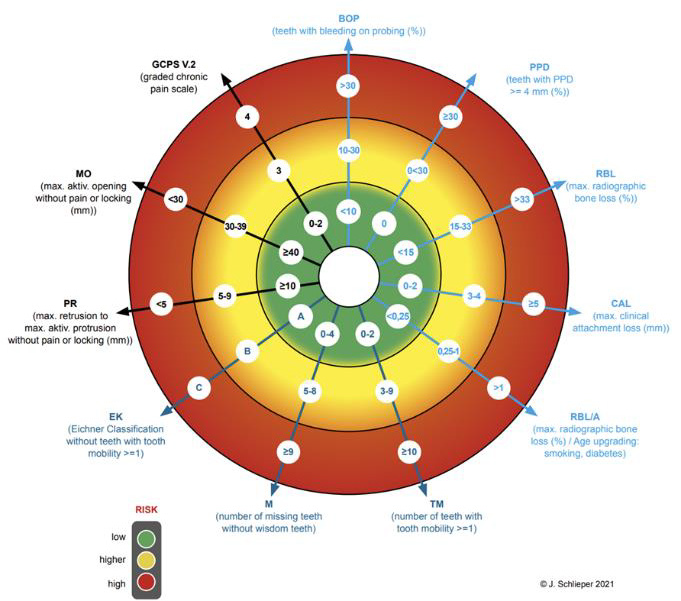Comparative Efficacy of Three Bait Toxicants Against the SubterraneanTermite Reticulitermes Santonensis (Isoptera/Blattoidea: Rhinotermitidae)
Introduction
Selection of the Termiticides
Use of Hexaflumuron, Thiamethoxam and Imidacloprid bait toxicants
Reticulitermes Santonensis has a localized distribution in south western France Clement et al. [1]. But causes serious damage in urban areas, especially in Paris due to its presence for a few decades. The presence of R Santonensis in Paris was first reported in 1945 ina private garden in the 16th arrondissement (ardt) and was officially noticed by C. Noirot in 1953 near the original sighting. This termite has currently infested more than half of the arrondissements in the city. Buildings are mainly infested but trees along streets have been observed to be attacked by termites since 1993. Between 1994 and 1995, treatment using baits considerably decreased the presence of termites attacking live trees in a Parisian street Lohou et al. [2]. However, a better understanding of how colonies and populations are organized is necessary to control these pests in a targeted and professional manner. Indeed, Reticulitermes spp. has a cryptic life and foraging habits that make their social structure difficult to determine. Moreover, R Santonensis societies are known to be open, i.e., do not show inter-colonial aggression, so that they may form a vast underground network Clément et al. [3,4]. In urban areas control of termite still depends mainly on the use of highly persistent and environmentally problematic insecticides Pearce [5] so, effective alternatives are needed urgently. One of the possibilities for termite control is the use of bait technology. The ideal product for this purpose should be environmentally safe, adequately stable and non- repellent, so that termites will take it up while feeding. The product should also be `slow-acting’ (with post-poned action), so that the effects of the compound will be manifested only after termites have carried it back to the nest and distributed it among nest mates during mutual food exchange. Subterranean termites are one of the world’s most economically important pests because they damage structural wood Hickin [6].
The pest control industry spends approximately two billion dollars a year to suppress termite infestations and/or try to avoid their damage to structures Su et al. [7]. Worldwide there are 15 species of subterranean termites that are considered to be economically important pests Hickin [6]. The most economically important species in Europe are the Reticulitermes spp. subterranean termites are very successful because of their eusociality. Social insects live in large family groups and work together for the good of the colony. The worker termite caste is the most numerous and is responsible for all of the labour in the colony. Worker termite tasks include taking care of the brood, maintaining and repairing the nest, and foraging for food Krishna [8]. Other castes, such as soldiers and functional reproductive, are entirely dependant on the worker termite for food (Grassé and Noirot, et al. [9]. Worker termites forage for food, bring it back to the colony, and feed all other nestmates. Therefore, worker termites are the caste that damages structural wood.
The number of termites is known to have an effect on survivorship of individuals under experimental conditions Forschler et al. [10]. However, there is a paucity of information’s available with regard to R. Santonensis (Isoptera: Rhinotermitidae). Some authors have claimed that only 50 individuals of Reticulitermes species are required for colony establishment Jacquiot et al. [11,12]. While Hrdy believed that more than 50 individuals of R lucifugus species were required to start a colony and that even with 250 individuals, survival was very low. Sen-sarma [13] reviewed laboratory tests on a number of Reticulitermes species 200-500 workers to be the optimum number. In contrast, Becker, et al. [14] mentioned having initiated colonies with less than ten larvae and workers. The arena and substrate used in Hardy’s (1961) study were not mentioned although these factors may be of great importance for termite survival Lenz, et al. [15]. Haverty found that Reticulitermes species took longer than Coptotermes formosanus to reach caste ratio equilibrium, possibly because of the former’s slow rate of differentiation. This may in turn mean that the rate of establishment under ideal conditions may be slower for Reticulitermes species relative to other termite genera. The number of individuals present in natural colonies has also been thought to dictate the number of individuals that should be used in laboratory colony Sen Sarma [13]. This may be an important fact to consider during experimental design to enable easier comparison between laboratory test and the field. In Reticulitermes species natural colonies are said to comprise thousands of individuals Nutting, et al. [16]. Termites (order: Isoptera) make up, together with mantids and cockroaches, the most primitive winged terrestrial insect taxon, the Dictyoptera Deitz [17]. The Isoptera are divided, dependent on the reference, in six or seven families Noirot, et al. [18-20], which can be further separated into evolutionary lower and higher termites. Higher termites are differentiated from lower termites mainly by the absence of symbiotic flagellates in their enlarged hindgut. The loss of these symbiotic microorganisms in the course of evolution is most likely due to the changed feeding habit of these species, most of which feed on soil or cultivate fungi in their mounds as symbiotic partner for the digestion of wood Noirot, et al. [18]. Phylogenetically lower termites, in contrast, depend on symbiotic protozoa in their intestinal tract for the degradation of lignocellulose Cleveland, et al. [21].
The novel concept of the pest management of subterranean termites utilizing termite baiting systems is a paradigm in the pest control field. The standard method of termite control for many years was to exclude termites from buildings with a liquid barrier treatment. The barrier is a “passive” treatment regime, following the initial application of termiticide. The utilization of termite baiting systems, with installation, monitoring, application of active ingredient, and continuous re-monitoring and re-application, as needed, constitutes an “active” treatment regime. Bait stations are designed to facilitate the consumption of a bait-toxicant and its transfer to the rest of the colony; the goal is termite population reduction or elimination Su, et al. [22]. The discovery and use of termite baiting systems to treat subterranean termites created confusion and controversy in the industry (Potter 2004). Many questions arose concerning efficacy of this novel treatment, as well as questions concerning the variable time required before termites located the monitoring stations, fed on active ingredient, spread the material to others in the colony through the food exchange process of trophallaxis, achieved some sort of control of the termite population, and ultimately protected structures. Many factors would conceivably affect this time frame, including the species of subterranean termite, season of year, ambient temperature, colony size, moisture supply, palatability of the bait matrix used, number and distance between in-ground bait stations, and whether aboveground bait stations were utilized directly on active termite shelter tubes or in carton material in aerial nests.
One of the major advantages of the baiting system approach is the capability of reducing populations of subterranean termites, with the possibility of suppressing or eliminating termite colonies Lax, et al. [23]. Some of the major disadvantages of the baiting system approach are the time and effort required in the “active” treatment regime; this approach has always been very labour-intensive and must be continuously monitored and maintained in order to perpetuate an area that is free of termites [22]. To date, all commercial baits are formulated to be slow acting. The first bait system was developed in 1990 by Dow Agro Sciences: the Sentricon® Termite Elimination System. The slow acting ingredient in this product is hexaflumuron [N-(3,5-dichloro-4-(1,1,2,2 tetrafluroethoxy) phenyl) amino) carbonyl)-2,6- diflurobenzamide]. Hexaflumuron, a benzophenylurea, is an insect growth regulator, which functions as a chitin synthesis inhibitor. Three commercial termite baiting systems are available in the market. The Sentricon® system Getty, et al. [24-27] utilizes hexaflumuron. The First Line® system and the Terminate® system both contain sulfluramid Ballard, et al. [28,29]. Claims are made that these three baiting systems are effective in reducing termite populations and protecting structures from termite infestations. The Sentricon® system makes the claim of “colony elimination.”
One Strategy for the remedial control of subterranean termites is the use of slow acting non- repellent toxicant in a bait or as a dust .This strategy is based on the premise that an entire colony of subterranean termites can be destroyed even if only a small part of the existing gallery system is treated, because the toxicant is distributed to the entire colony by social interaction (trophallaxis and grooming) with the exposed foragers. Over the past decade the rationale of subterranean termite control with repellent chemical barriers has come under scrutiny, and an alternative paradigm of population suppression has emerged. This approach to termite control relies on non-repellent baits or insecticide treatments that do not stimulate behavioral defenses or avoidance. With the advent of these non-repellent treatments, an understanding of termite foraging and tunneling behavior in the subsurface soil environment has become increasingly important. For more than six decades, soil treatments with termiticides have been the conventional technique for controlling subterranean termites Su, et al. [22]. Even though baiting has become a popular termite control strategy in the past 10yrs, two thirds of the treatments by pest control companies are applications of liquid termiticides to soil Curl [30]. Research and development has focused on the slow acting insecticides in which mortality and the speed of kill are concentration dependent (Su et al. 1987). Slow-acting, nonrepellent termiticides are a relatively recent innovation in subterranean termite control. As with fastacting, nonrepellent termiticides such as chloropyrifos, they are designed to kill rather than merely repel termites Su et al. [31].
In recent years, non-repellent termiticides have become popular alternatives for termite control industry. Approximately 60% of the termiticides used in 2002 were one of the non-repellent termiticides such as fipronil (Termidor, BASF Corp., Research Triangle Park, NC), imidacloprid (Premise, Bayer Environmental Service, Montvale, NJ) or chlorfenapyr (Phantom, BASF Corp.) Anonymous [32]. Because of their non repellency and apparent delayed action, it has been suggested that, unlike the repellent pyrethroid or fast-acting organic phosphate termiticides, these new termiticides may impact the subterranean termite populations Kard [33,34]. Subterranean termites (Isoptera: Rhinotermitidae) cause billions of dollars in structural damage annually around the world. Because of the economic significance of these termites, numerous monitoring and control tactics have been evaluated for their ability to detect and suppress termite activity Su, et al. [35-40]. Arguably, the two most widely used methods of subterranean termite control in the United States are soil applications of liquid termiticide and termite baiting systems [21]. Although liquid termiticide soil applications have been the predominant method of subterranean termite control for the past 50 years Thorne, et al. [10] termite bait systems have become an important competitor in the termite market over the past decade Potter, et al. [29]. Preventive and remedial treatments are commonly used to suppress or control subterranean termites in buildings.
The use of liquid termiticides as chemical barriers under and/or around buildings is thought to be an effective method for preventing termite entry into buildings. New non-repellent and slow-acting termiticides have recently appeared on the market and have rapidly gained popularity as soil-treatment agents. Even relatively small amounts of such newly commercialized chemicals can imbue soil with preventive and remedial properties. These chemicals include an oxadiazine compound (indoxacarb), neonicotinoids, phenyl pyrazole compound(s), (fipronil) and a pyrrole compound (chlorfenapyr). Their slow-acting efficacy and non-repellency towards subterranean termite species have been studied extensively Gahlhoff [41-44]. Previous experiments have demonstrated that termites gradually take more than a lethal dose of these chemicals because their non-repellency allows the active ingredients to be taken up while tunnelling, although termites can penetrate the treated soil to some extent. As a consequence, many termite foragers are affected and the whole colony finally suffers severe damage.
Soil treatments with liquids insecticides have been the major tool in subterranean termite control since the 1950s. In 2002, for example, soil termiticide applications accounted for 77% market share of the subterranean termite control business in the United States Anonymous [31]. The application of soil termiticides beneath a structure creates a barrier to exclude soil-borne termites. Because of the extensive foraging range of an underground colony, soil termiticide treatments usually do not impact the overall population of subterranean termites Su, et al. [31]. The surviving colony continues to produce foragers and alates that further infest nearby areas. The termite control industry is reliance on soil termiticide barriers is one of the contributing factors for the continuing expansion of the Formosan subterranean termite, Coptotermes formosanus Shiraki, in the United States. Approximately 60% of the termiticides used in 2002 were one of the non-repellent termiticides such as fipronil (Termidor, BASF Corp., Research Triangle Park, NC), imidacloprid (Premise, Bayer Environmental Service, Montvale, NJ), or chlorfenapyr (Phantom, BASF Corp.) Anonymous [31].
Because of their non-repellency and apparent delayed action, it has been suggested that, unlike the repellent pyrethroid or fast-acting organic phosphate termiticides, these new termiticides may impact the subterranean termite populations [45-47].
Laboratory study indicated that termites exposed to sublethal doses of imidacloprid did not show aversion to the subsequent exposure and may continue to travel through the treated soil, resulting in the colony suppression Thorne, et al. [48]. Movement of exposed termites also may spread the nonrepellent toxicants to nestmates through trophallaxis and social grooming Ibrahim, et al. [49]. Shelton, et al. [39], however, reported that high concentration of fipronil (10 ppm) was needed for a successful transfer of lethal dose to recipients, but at such dose, the donors may be killed too fast for a substantial toxicant transfer to occur within the population. Imidacloprid is an insecticide exhibiting low mammalian toxicity. It acts on the insect nervous system by attaching to the acetylcholine binding sites, called nicotinergic receptors, on receiving nerve cells Abbink [50].
This mode of action prevents transmission of information at these binding sites, leading to a lasting impairment of the nervous system and eventually death of the insect Schroeder [51]. Mammals have few nicotinergic receptors; thus, imidacloprid has very low mammalian toxicity Sattelle et al. [52]. Subterranean termite baiting technology has been a major breakthrough in termite management and baiting systems have quickly captured a significant portion of the termite control market Pawson [53]; Su and Scheffrahn [22]; Potter et al. [54]. Soil treatments with a slowacting, non-repellent insecticide would result in elimination of termite populations in areas adjacent to the treatments Thorne and Breisch [43], Potter and Hillery [46]. Such a liquid-bait would be very desirable because it would provide population suppression by eliminating colonies one by one but have advantages over bait with the reduced labor of a soil termiticide. One proposed slow-acting, non-repellent termiticide is the new generation neonicotinoid imidacloprid Matsuda et al. [55]. Imidacloprid, a nicotine analog, is an insect-specific agonist of nicotinic acetylcholine receptors that has been reported to be nonrepellent to termites Matsuda et al. [54], Thorne and Breisch [42]. The concept of a baiting technique for termite pest management dates back to Esenther and Gray [56], with subsequent research investigating various slow-acting active ingredients Beard [57]; Esenther and Beal [58,59].
Baits using chitin synthesis inhibitors as an active ingredient are effective at controlling subterranean termites Su [59] Su and Scheffrahn [60], Rojas and Morales-Ramos [61]. Recent developments for control of subterranean termites include the use of monitoring-baiting programs Su [62]. Chitin synthesis inhibitors share a similar chemical structure as other benzoyl phenyl ureas. Their mode of action is by interfering with the polymerization pathway of chitin, inducing accumulation of the monomer uridine diphospho-Nacetylglucosamine and blocking its synthesis Beeman [63]. These benzoylphenyl ureas are slow-acting poisons (showing effects within weeks), allowing foraging termite workers to transfer the active ingredient among other members of the colony Su and Scheffrahn [64]. Reported effects of chitin synthesis inhibitors on subterranean termites mainly include defective molting of immature individuals Su and Scheffrahn [65,66].
Baiting systems using active ingredients such as moult (chitin synthesis) inhibitors, have become widely used in the control of termites affecting housing. They are effective in eliminating colonies when used consistently over an extended period of time. However, their application against termite pests in agriculture and plantation or urban forestry has not yet been widely developed or specifically tailored for the purpose. They would almost certainly prove to be effective against subterranean pest species from among the lower termites, such as Reticulitermes and Coptotermes. Systems specifically designed for the treatment of termites on trees will probably become available in the future and will be a low-environmental-risk chemical method of control, because the chemicals can be targeted specifically at pest species of termites in baiting receptacles. Bait systems have already been tested and have shown promising results against R.Santonensis in Paris, where city officials are also co-operating with the Centre National de la Recherche Scientifique (CNRS) in a pilot study to investigate colony and population structure using molecular and chemical markers. Hopefully this knowledge will lead to a better understanding of the pest’s invasion strategies and allow development of effective targeted control measures for Paris and other big cities (UNEP/ FAO/Global IPM Facility Expert Group on Termite Biology and Management 2000-02).
Although liquid applications are the primary method of termite control in the pest management industry, bait systems are widely used today, especially in situations where liquid treatments have failed Kistner and Sbragia [67]. Bait systems can be used effectively to control termite colonies in areas where they pose structural damage problems with limited accessibility Kistner, Sbragia [67]. Many studies have demonstrated that bait systems can eliminate entire colonies of subterranean termites Esenther and Gray [55]; Su [63]; Su et al. [68]; DeMark et al. [32]; Su et al. [69]; Grace et al. Su and Scheffrahn [26,65,70-74], whereas liquid applications have been shown to not affect large portions of the termite population around a structure Su and Scheffrahn [75]. Colony elimination occurs because the slow acting nature of the ingested toxicant allows foragers time to return to the colony and transfer the toxic material to unexposed nestmates before killing the carrier Beard [57]; Sheets et al. [76]. Because bait systems work to eliminate colonies, they can provide long term protection to structures Chambers and Benson [69]; Grace and Su [77].
The first bait system, the Sentricon® Termite Elimination System, was developed in 1990 by Dow AgroSciences and was registered for use in 1994. Sentricon® is a stand alone treatment that is not to be used in combination with liquid termiticides. Furthermore, Sentricon® is a monthly monitoring system and when termite infestations are found, the wood monitor is removed and the Recruit II® bait is inserted into the station. Now the most widely used bait system, the Recruit II® bait utilizes a chitin synthesis inhibitor, hexaflumuron[N-(((3,5-dichloro-4-(1,1,2,2- tetrafluroethoxy)phenyl)-amino)carbonyl)-2,6 diflurobenzamide], as its active ingredient. Hexaflumuron has been used to control a variety of agricultural pests, but it is also useful against subterranean termites Su and Scheffrahn [66]; Su [63]; Chambers and Benson [68]; Su [69]. It is lethal at low concentrations and has no associated feeding deterrence Robertson and Su [69]. Sheets et al. [76] determined that the rate at which workers eliminate hexaflumuron from the body is slower than the rate they take up food. This delay causes a build-up of the toxicant to occur in the termite body. Since the introduction of the Sentricon® System, other bait systems have been designed and marketed. Another chitin synthesis inhibitor, diflubenzuron, is the active ingredient in the Exterra® Termite Interception and Bait System developed by Ensyntax. Like hexaflumuron, diflubenzuron, was first introduced as an insecticide for other insects, such as the gypsy moth and various caterpillar species. Due to its success in controlling these insects, diflubenzuron was evaluated for efficacy against subterranean termites Doppelreiter and Lorioth 1981). The Exterra® System is a monthly or quarterly monitoring system. The diflubenzuron bait, Requium® is inserted into the stations if termites are found feeding on the monitors.
The design of the Exterra® bait station allows for Requium® to be added to the station, without removing the wood monitors so foraging termites are not disturbed. The Exterra® System is also designed as a stand alone treatment. Although Exterra® seems to be structured similar to that of Sentricon®, diflubenzuron has not attained as high a level of success as hexaflumuron. Su and Scheffrahn [60] determined that C. formosanus were deterred from feeding on baits with diflubenzuron concentrations >2ppm and had very low rates of consumption at concentrations of 500 and 1,000ppm diflubenzuron. Furthermore, mortality was lower for termites feeding on diflubenzuron treated wood than that for termites feeding on wood treated with hexaflumuron. A third widely used bait system was created by FMC in 1996, the Firstline® Termite Bait System. This system contains the slow acting stomach toxicant sulfluramid. Unlike the hexaflumuron diflubenzuron, sulfluramid works by disrupting energy metabolism in termites Valles and Koehler [78]. The First line® System consists of an in-ground station with up to four wooden monitors inside. The stations must be checked every three months for signs of infesting termites. If termites are found, the infested wooden monitors are replaced with a sulfluramid bait. Like diflubenzuron, sulfluramid deters feeding at higher concentrations and is usable only at a small range of concentrations (4-10ppm for C. formosanus and 18-30ppm for R. flavipes; Su and Scheffrahn [79]. Firstline® cannot be used as a stand alone treatment and must be used in combination with liquid applications.
Esenther and Gray [55] were the first to suggest using a slow acting toxicant for termite control. Many slow acting toxicants have been impregnated into wooden bait blocks and tested against subterranean termites, such as mirex Esenther and Beal [57], Paton and Miller [80] hydramethylnon Su et al. [81], avermectin B1 Su et al. [82], A-9248 (di iodomethyl para-toyl sulfone) Su and Scheffrahn [83] sulfluramid Su and Scheffrahn [79], hexaflumuron Su [62] and diflubenzuron Su and Scheffrahn [65]. Although many of these chemicals successfully reduced termite populations, special emphasis has been placed on the use of IGRs as the slow acting toxicant in bait systems. In addition to not killing foraging termites on contact and allowing sufficient time for the termites to return to the colony and feed unexposed nestmates, IGRs are also detrimental to the colony dynamics. Because IGRs induce presoldier and intercaste production in termites Lüscher [84]; Howard and Haverty et al. [85-88], the ratio of caste members inside a termite colony is disrupted and the production of foraging workers is reduced Hrdý and Křeček [89]; Haverty [90]. With more soldier termites, the colony has more dependent mouths to feed and fewer worker termites to find food. Therefore, IGRs, such as hexaflumuron, were the first toxicants to be marketed in bait systems. IGRs work by three different methods: as juvenile hormone analogues (JHA), as precocenes, and as chitin synthesis inhibitors Ware [91]. Juvenile hormones (JHs) are hormones in the insect’s body direct normal growth, development, and maturation of insects. JHAs can mimic these hormones and disrupt insect development or their emergence as adults Ware [92]. Precocenes affect the corpus allatum, the gland that secrete hormones, primarily JH. These hormones are important insect hormones because they control reproduction, molting, and metamorphosis Ware [92]. Chitin synthesis inhibitors (CSIs) disrupt the insect molting process, which ultimately causes death in immature insects because they die in the process of shedding their exoskeleton.
It is the CSIs that are used as many termiticides, especially in the bait systems. CSIs are benzoylphenyl ureas (BPUs) insecticides and inhibit normal chitin formation in larvae Ishaaya [93] by causing abnormal deposits of endocuticle to accumulate Mulder and Gijswijt [94]. BPUs have also been shown to suppress fecundity and exhibit ovicidal toxicity in some species of insects due to the chitin component of their egg shells Ascher and Nemny [95], Sarasua and Santiago-Alvarez [96-98]. The use of CSIs in termite control is very favorable because they target only a few selective organisms and are not broad spectrum insecticides. The selectivity is due to many factors, including their toxicity only to immature arthropods and not vertebrates, to the fact that they must be ingested for activation, and to their slow activation Granett [99]; Horowitz et al. [100]. The selectivity of CSIs allows for safe use around mammals and nontarget organisms, for low rate of accumulation in the soil, and for low bio magnification in the environment Verloop and Ferrell [101]. Using CSIs in bait stations as a means to control subterranean termite infestations has become increasingly important (reviewed in Su and Scheffrahn [102].
Evidence indicates that CSIs provide an effective method for termite control because of their slow acting properties, their ability to increase presoldier production within the termite colony, their capacity to cause gut defaunation and subsequent starvation of termites, and their non-repellent nature Haverty and Howard [103]; Haverty et al. [104]; Howard; Howard and Haverty [85,105,106]; Jones [86]; Su et al. [87]; Su and Scheffrahn [88]. CSIs, such as hexaflumuron, were considered for use in bait systems because of their success in controlling agricultural pests. Hexaflumuron was found to be effective against many species of agricultural crop pests, such as army beetworm (Spodoptera exugua) Belda and Guerrero [107], the spiny bollworm (Earias insulana (Boisd) Horowitz et al. [100], the sugar beet weevil (Aubeonymusmariaefranciscae Roudier) Marco et al. Perez- Farubism et al. [98], and a number of pests on apples and peaches Komblas et al. [108]. Furthermore, hexaflumuron has been observed to have some ovicidal activity Komblas and Hunter [109]; Horowitz et al. [110] and affect fecundity and egg hatchability in different insect species Asher et al. [111]; Horowitz et al. [110]; Marco and Vinuela [112]. Because hexaflumuron is useful against agricultural pests and the fact that it acts more quickly than other CSIs Sbragia et al. [113], Dow Agro Sciences began researching hexaflumuron for use in controlling subterranean termites. The use of baits for the control of subterranean termites has been a goal for decades Randall and Doody [114], with a significant amount of research effort during the past 30 yr Beard [56], Esenther and Beal [57,58]; French and Robinson [115]; French [116]; Su [59,62]; Grace et al. [117]; Forschler and Ryder [118,119]; Potter [29]; Haagsma and Bean [26]; Su and Scheffrahn [22]. The success of termite bait development rests not only in the knowledge of termite responses to the toxicant but also in an understanding of the biology and ecology of these insects Traniello and Thorne [120]; Lewis et al. [28]; Getty et al. [121,122]; Haverty et al. [24,121,122]. Many variables, such as seasonal weather patterns, predation, and competition between nearby colonies, size or age of a colony, and the number of alternative food sources available can affect the viability of a termite colony and confound the interpretation of the action of the bait Forschler and Ryder [118,119].
Because of the cryptic lifestyle of subterranean termites, it can be difficult to assess the efficacy of termite bait. From a research perspective, once bait is deployed it is imperative that there be a system for observing the effects on termites that does not include using the bait itself for monitoring. Because termites may return to a baited area, a distinction between termites of a previously baited colony and those from neighbouring colonies or species of Reticulitermes reinvading previously occupied sites must be made to determine whether suppression or elimination has been achieved Su and Scheffrahn [66]. Active subterranean termite monitoring stations that are known to be connected to a bait station or delivery device become important windows into a colony and a tool for observing the effects of baiting Su and Scheffrahn [66], Lewis et al. [28]. After a colony has been suppressed or eliminated as a result of baiting, identification of colonies invading the baited territory (monitoring stations previously occupied) is the final factor in understanding the success of this technology Getty et al. [123,124]. The slow mode of action of the slow acting toxicants can eliminate colonies of subterranean termites.The toxicant in this way is allowed to be distributed widely within colony, as has been demonstrated both in the laboratory and in the field.
The subterranean termite is truly a puzzle. It is the most destructive, xylophagous pest of human structures and economically important plants Potter [29,21]; Su and Scheffrahn [125]. Nationwide costs for prevention, control, and repair attributable to subterranean termites is estimated to be in excess of $1.7 billion annually in 1993 Gold et al. [126]. A more recent analysis estimates these costs at $11 billion annually Su [127]. Paradoxically, subterranean termites are also some of the most beneficial insects due to nutrient cycling of valuable biomass, particularly cellulose and lignin, which are resources that few other organisms are capable of degrading Kofoid [128], Thorne and Forschler [10]. Despite their economic impact, relatively little is known about these social insects. Weesner [129] comments that we have “only fragments of information” about these cryptic organisms yet adds that termite “control methods are initially based upon some knowledge of the biology of the particular species of termite involved.” Indeed, the advent and widespread use of the chlorinated hydrocarbon termiticides as effective soil barriers following World War II vitiated widespread termite research efforts for much of the 20th century Ware [91]. Basic knowledge of the physiological and behavioural attributes of termites and the complex ecological relationships exhibited in their subterranean background is made difficult due to their cryptic mode of existence and was given minimal attention until the loss of Chlordane and related compounds to the United States and Australia in 1988 Kofoid 128, Weesner 129, Wilson [130].
This resulted in challenges in the termite control industry, with academic and industry scientists searching for alternative termiticides. Alternative termiticides formulated from organophosphate and pyrethroid chemistry were much morecostly and had limited residual efficacy and longevity in soil when compared to chlorinated hydrocarbons. The end of production and subsequent loss of availability of chlordane and related compounds to the rest of the world in 1998 resulted in an atmosphere of fear and doubt concerning the future of effective, economical termite control. Subterranean termites in the genus Reticulitermes, everpresent in North America, are well known for their destructive capability Pearce [5]. The principal component of their diet is wood, which is also the dominant structural element of the building construction industry Thorne and Forschler [10]. Their innate role as decomposers of wood and other vegetation in the natural ecosystem changes their status from beneficial insect to that of a “pest,” depending on whether the subject of their attack is a fallen tree or the lumber in a home or other building. The continued growth and expansion of urbanization also creates conditions conducive to infestation by subterranean termites. Wood-framed structures, well-watered lawns, bark mulch adjacent to buildings, and firewood piles beckon to the termites to feast on the overabundance Pearce [5].
One beneficial effect that has arisen from these concerns is the increased emphasis on the research into the biology of subterranean termites, particularly as it relates to pest management Haverty et al. [121, 24]; Houseman, et al. [131-134]; Thorne and Forschler [10]. Alternative physical, mechanical, and chemical control methodologies have begun to be extensively researched Cornelius et al. [135]; Forschler and Henderson [136]; Gold et al. [37], Grace et al. [137]; Jones [86,138-141]. Biological control strategies for insects such as termites have been examined by Schmid-Hempel [142], Van Driesch and Bellows [143], Wright et al. [144]. For most of the twentieth century, control of subterranean termites relied on liquid barrier treatments with termiticides, placed under and around structures in order to protect them. With the advent of termite baiting systems during the end of the last century, there was a shift in termite treatments utilizing the baiting concept. Current termite management efforts, as well as efficacy studies, began to concentrate on baiting system technologies Traniello and Thorne [120], utilizing fenoxycarb Jones [138], Jones and Lenz [145], chitin synthesis inhibitors (hexaflumuron and diflubenzuron) or slow-acting stomach poisons (hydramethylnon, sulfluramid, and boric acid) as active ingredients Ballard [146]; Getty et al. [24]; Haagsma and Bean [26]; Lewis et al. [28]; Pawson and Gold [37]; Sheets et al. [76]; Su [79,62], Su and Scheffrahn [79], [65], [64, 66]; Su et al. [147]. The concept of a baiting technique for termite pest management dates back to Esenther and Gray [55], with subsequent research investigating various slow-acting active ingredients Beard [56]; Esenther and Beal [57, 58]. The utilization of termite baiting system technologies was a natural outgrowth of the desire for pest management efficacy accomplished with reduced levels of pesticide use, as well as the emphasis on “reduced risk” strategies. The termite baiting system technologies were particularly appealing to those concerned with the potential risks associated with the large quantities of liquid termiticides necessary for traditional chemical barrier treatments for termite Control Pawson and Gold [52], as well as the need for another treatment option when a traditional termiticide treatment was not successful in protecting a structure.
The objective of a termite baiting system is the management of termite populations and is accomplished through distribution of a toxicant or inhibitor into a colony within a palatable food (cellulose) substrate Grace et al. [148], Thorne and Forschler [10]. The strategy relies on the foraging activity of the pseudergates (workers) to gather and introduce this material into the social fabric of a colony where it will be shared through trophallaxis and subsequently kills or inhibits the normal development and metamorphosis of colony members Potter [29]; Su [59, 62]; Su and Scheffrahn [64]. The goal of this management tactic is the eventual collapse and death of the colony, or to be “functionally” eliminated, as described by Su [62]. Regulatory perspectives and challenges for termite baiting system registration will be determined, ultimately, by bait-toxicant risk and efficacy results Sweeney [149]. It is important to note that time is required for foraging termites to locate the bait stations, consume sufficient active ingredient, and share with nest mates through trophallaxis in order to control termite populations. Each stage is dependent on the results of the previous stage, and when one event influences interdependence, rather than independence, is the result, particularly in a biologically complex system such as a subterranean termite colony Buchanan [150]. Several of the previously cited active ingredients of baiting systems have been investigated through laboratory and field bioassays to determine their efficacy against termite populations Forschler and Chiao [10], Rojas and Morales-Ramos [61], Su and Scheffrahn [59], Su et al. [147].
Several termite baiting systems utilizing these ingredients have entered the market place and are being marketed to pest control companies or directly to the public as a means to achieve the control of termites Ballard and Lewis [151]. While there is limited information available on the efficacy of termite baiting systems, unbiased scientific data comparing different systems under actual use situations, and in significant numbers, is generally lacking. This current report using termite Reticulitermes Santonensis examined the evaluation of the efficacy of available termite baiting system and its bait-toxicant active ingredients. The following studies were conducted to evaluate several functional aspects of one such bait System, and its active ingredient, using hexaflumuron, Imidacloprid and Thiamethoxam bait toxicants. This report consists of three specific objectives:
a. To determine the minimum Colony size that can be established in order to produce mini colonies suitable for population studies.
b. To conduct mortality bioassays with a range of fast (neuroactive) and slow acting (Insect Growth regulator) chemical termiticides.
c. To investigate the efficacy of termite Elimination System through feeding bioassays under choice and no-choice conditions with hexaflumuron and Thiamethoxam as bait-toxicants for subterranean termite R. Santonensis.
R Santonensis which causes an estimated several million euros worth of damage to street trees in the city of Paris alone, where there are about 90,000 trees worth around 2500 euros each. This species attacks deciduous trees indiscriminately, regardless of age and species. Among tree species attacked are the plane tree, chestnut tree, ash tree, wing nut (Pterocarya spp.), poplar, etc. The current distribution of R Santonensis is north of the Gironde, Charentes, and Vendee; is prevalent in the Loire Valley, Normandy, Centre, Paris and its suburbs Guillaume [152]; and is random in other northern districts Bagneres [153]. In Paris, R. Santonensis has become a significant pest to structures and trees Lohou et al. [2]. A colony of the subterranean termit, R Santonensis was already based from France in 1960, and reared in the laboratory at Silwood Park campus under constant conditions (25°C, 75% RH). The colony was housed in a plastic container with compost and four tiers of Pine blocks. Within the container the termites had access to feed on the Pine blocks. To augment the mini colonies termites were taken from the stock culture and 200 termite workers with natural caste composition were gently tapped into a container and then gradually transferred to the main experimental culture box.
In order to establish the mini colonies of the termite R Santonensis under laboratory conditions, Scot pine, which is one of the most susceptible wood species was used in this study. Wooden blocks (length× Width× thickness: 30× 4× 1cm) were cut and obtained from the commercial timber yard. They were cleaned and kept in a dry place before their use for one week. The test apparatus containing three types of the plastic boxes with specific dimensions ( Length× height× width: 395× 290 ×255cm , 395× 155× 255 cm and 245× 160× 180cm) respectively. Appropriate amount of compost 1000 grams was added along with 200 termite workers in each large sized transparent box containing four tiers of pine blocks. Another set of 20 small sized plastic containers (Length× height× width: 245× 160× 180 cm) were also used. In these boxes the number of termites released was, 10, 25, 50,100 and 250. Four replicates (n=4) for each small boxes were used and randomised. Thus a total of 20 plastic containers were used to establish mini colonies. The termites were handled with a moist paint brush. Five Scot pine squares were added to each of the container. This experiment was run for 7 months. In this experiment workers or pseudergates of a uniform stage (approximately W5) were used, their morphology (Buchli, 1958) and their stomach contents were used to judge whether or not they were functional workers. All the containers were then covered with black polythene to minimise the effects of light and placed in the CT room at 26+ 1°C, RH 75%. Moisture in the containers was kept judiciously and checked twice in a month. After test period the survival was determined by the number of individuals present at the end of the experiment. The data were analysed statistically using R (2.6.0, R development core team, 2008) and Minitab release (Version, 15).
Hexaflumuron, Thiamethioxam and Imidacloprid were selected. Different concentrations of the three toxicants were prepared using distilled water and acetone as solvents.
To examine the efficacy of the hexaflumuron, imidacloprid and Thiamethoxam as bait toxicants, different concentrations/doses were prepared separately by diluting the termiticides formulation ( based on the solubility) in solvents (acetone or distilled water) to obtain desired concentrations of 0.3,1,3,10, 100, 300, 1000 and 3000ppm. Four replicates for each concentration were used. Distilled water and acetone were used as control. Two pieces of Whatmann filter paper No. 1 (55mm in diam) were rolled and inserted inside the Wickes plumbing easy fit pipe (15× 2mm diam) placing vertically in the 75ml Pyrex beaker containing respective termiticide concentrations to allow uniform absorption of the chemical by the filter papers adopting the principle of capillary action. Tubes along with treated filter papers were placed in a fume hood for one hour to facilitate evaporation of the chemical from filter papers. Then tubes were partially buried in compost horizontally in the petriplates with 20 termite workers and conditioned at 25°C, 75% relative humidity for 3 weeks. Termite’s mortality and consumption was recorded after 3weeks. The experimental arenas along with all units were dismantled after 3 weeks. In another set of long-term experiment which lasted over 12 weeks using a low as well as high concentration of Thiamethoxam or Hexaflumuron.
